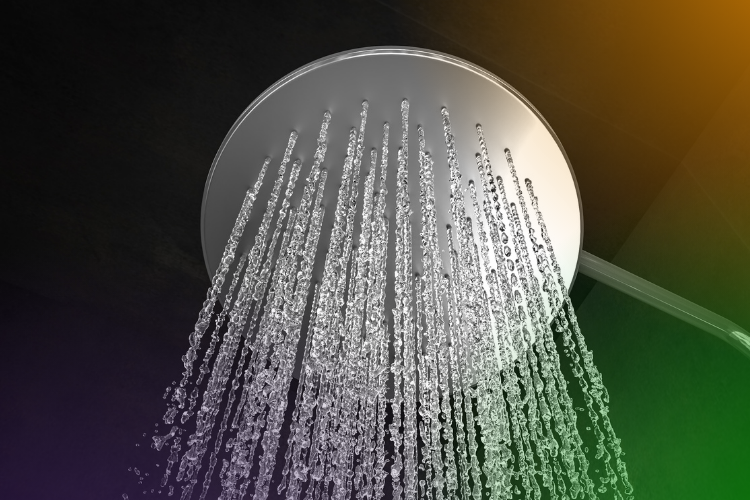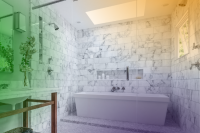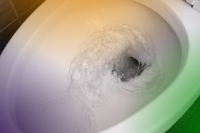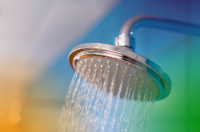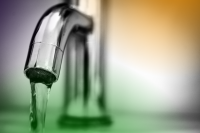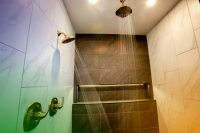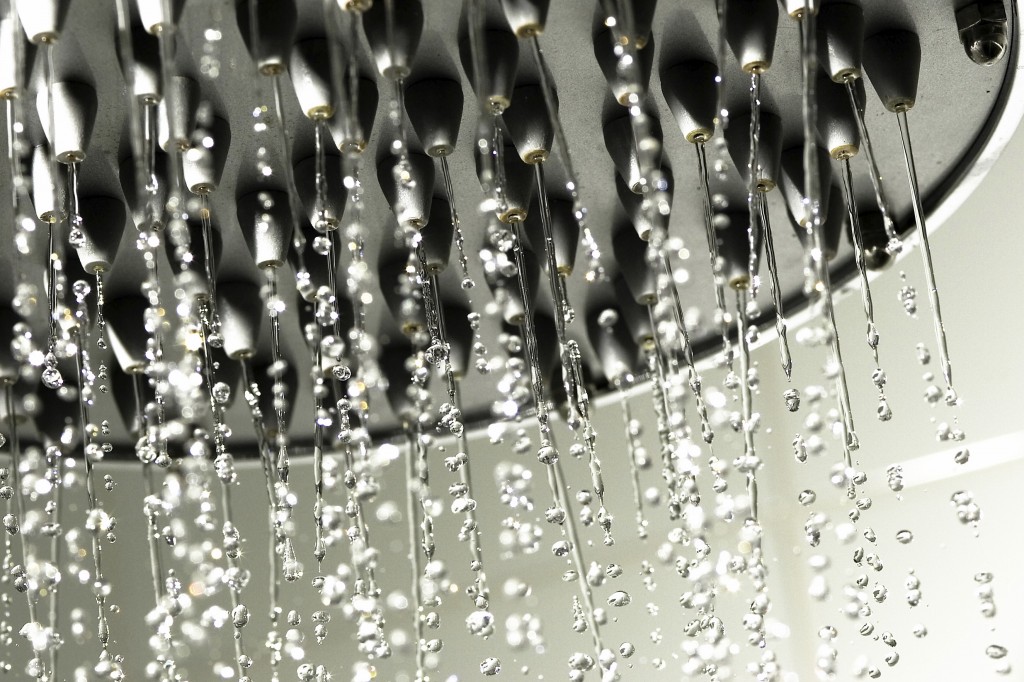
How To Fit A Shower - Brief Guide
If you've ever been the victim of a sudden surge of hot or cold water when taking a shower with a traditional mains fed shower when an unsuspecting family member turns on another tap in the house, or flushes the loo whilst you're showering you will hopefully soon benefit from the luxury of constant temperature waterflow which comes from fitting a thermostatic shower, using our handy step by step guide to fitting a shower.
Different Types Of Thermostatic Mixer Showers
There are two main types of thermostatic mixer showers available, although there are many variations upon these two main categories of mixer showers - the first main type of thermostatic mixer shower is a surface-mounted mixer shower.
Essentially, surface mounted mixer showers fit to the surface of the wall and so does the pipework - i.e the pipework is not embedded in the wall behind plasterwork or embedded in brickwork.
The second main type of mixer shower is a recessed mixer shower.
Recessed mixer showers have their pipework recessed into the wall with plasterwork and tiling fitted between the pipework and the thermostatic shower itself.
Our step by step guide to fitting your thermostatic shower includes a complete list of the tools and materials you will need to carry out your DIY shower fitting project.
Tools Needed To Fit A Shower
- Quality spirit level
- Drill suitable for drilling tiles - i.e. tile drill
- A spanner - adjustable spanner preferably
- Measuring tape
- Pencil for marking out
- Pipe cutters suitable to cut copper pipe or plastic water pipe
- Dust sheets to keep the area clean
Materials You Need To Fit A Shower
- Shower shut-off valves / isolating valves
- 15mm plastic pipe
- 15mm copper pipe
- A selection of tees and elbows in copper and plastic
- Thermostatic mixer shower
- Shower head for mixer showers
Fitting Your Shower
Where Will You Get Your Hot And Cold Water Supply From For Your Shower?
Before you start to fit your shower you will need to think about where you are going to bring the shower water supply from.
You can choose to either bring the water supply from the bath below by tapping into the taps using plumbing tees and elbows or you can bring the water supply from a nearby shower cubicle.
If you decide to bring the water supply from a shower cubicle you will normally find a suitable pipework tee point below the floorboards.
If in doubt about where the pipework is running, switch on the water to your selected watersource (i.e. the taps to the bath or the shower cubicle) and trace the flow of water back to a suitable point to tee in, as the water is running through the pipework.
Obviously the hot water pipe will be warm.
Turn off the water supply at the stopcock
Once you have identified where you are going to bring your new shower's water supply from, it's time to switch off the main water supply at the stopcock.
Just in case there is water already in the pipework and to prevent water leakage, you should turn on all the taps to run off any remaining water which is still in the system.
Run the pipework to the shower
With the water turned off at the main stopcock and any remaining water emptied from the system, you can start running your pipework to the site of the new shower.
You can use either plastic piping or copper piping to run the pipes to the shower.
Plastic piping is easier for the DIY plumber to work with but you should be careful to avoid leaks in plastic piping by fitting pipe inserts between joints and fit copper fittings at the end of the pipework for increased leak prevention.
Remember to fit isolating valves at the end of the pipework as near to the shower as possible without being intrusive or cosmetically unattractive.
Isolating valves might very well come in handy if your shower or pipework springs a leak.
With an additional water shut-off point near your shower you will not need to rely as much on the main water stopcock.
Flush the new pipework through
To avoid damaging thermostatic shower valves you should ensure that the pipework does not have any dirt or grit in it. Flush the pipework through to check this.
Measure where the shower valve will go
Hold the valve against the wall and check how much pipework length will be required to ensure the new thermostatic valve can fit flush.
Cut the hot and cold water outlet pipes to the right length
Once you have ascertained how much pipework is needed to fit the thermostatic shower valve you can cut the hot and cold water pipes for the shower using pipe cutters.
Make the holes for the thermostatic valve
Drill the holes in the wall to fit your thermostatic shower valve.
If you are drilling into tiles ensure that your drill bit is suitable to work on tiling.
Use a spirit level to fit any bracket or wall fitment flush to the wall to prevent problems when fitting the shower valve and to avoid damaging tiling or plasterwork.
Fit compression olives into each of the water inlets
For additional leakage prevention fit a compression olive and nip it up snugly.
Align the shower valve
Mark up the wall for the shower valve fitting taking care.
Fit the shower riser rail
Assess how high you want the shower riser rail.
Use a spirit level to mark vertically up the wall from the valve position to the height you would like the shower head to be.
If in doubt, for further assessment, stick masking tape to the wall vertically replacing the spirit level and take it to the point where the shower head will be.
Step back and check that the shower head will be in the correct position using the masking tape as an indication of the shower riser rail.
Once you are confident that the shower riser rail will be in the correct position, cut the shower riser rail and run the pipework up the riser rail.
Fit the shower head to the riser rail and test for leaks
The penultimate step to fitting your new shower is fixing the shower head at the top of the riser rail. Turn your new shower on and check the shower for leaks.
Checking The Shower Thermostat Works
Ensure that the thermostat kicks in by turning on the hot and cold water taps whilst checking that the temperature of your newly fitted shower stays constant as expected.
Your New Shower Is Fitted
A new thermostatic shower fitted. Enjoy your new shower!
Need A Shower Fitting?
If you decide that fitting a shower is not for you why not use Top Tradespeople's free quotes service to find a local plumber.
